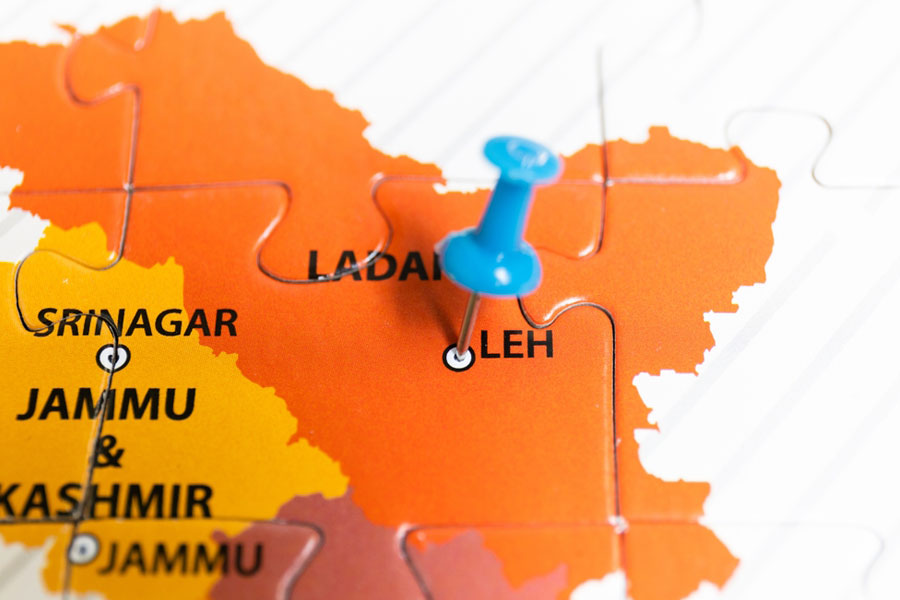
New Delhi, Aug. 5: Several parliamentarians have sought to link the IIT dropout rate to the social background of the students, differing from the standard government reply that attributes the problem to academic stress.
AIADMK leader P.R. Sundaram raised in the Lok Sabha today the dropout rate of students in IITs and said many such students hailed from socially and economically backward classes, Scheduled Castes and Scheduled Tribes.
Sundaram wondered why enough care was not being taken by the IITs to reduce the dropout rate and why such students were not being helped to maintain their academic performance.
He cited the recent case of IIT Roorkee expelling 73 students for low scores in the second semester. As many as 31 of the expelled students are from the Scheduled Tribes, 23 from Scheduled Castes and eight from Other Backward Classes. Four are physically challenged. The students have been taken back after a controversy.
“I would like to know from the minister whether the government has made any inquiry into it to prevent it in the future,” the MP said.
In her reply, human resource development minister Smriti Irani attributed the reasons for dropping out to “shifting
to other institutions, personal reasons, medical reasons, getting jobs during PG courses, inability to cope with academic stress, etc”.
She said the IITs had initiated a number of steps such as monitoring of academic progress, counselling and psychological motivation to address academic stress.
M. Thambidurai, the senior AIADMK leader in the Lok Sabha, pointed out that the dropout figures were high in some IITs while they were very low to nil in IIT Kanpur, IIT Madras and the new ones. (See chart)
“Why are they leaving from institutes in Mumbai and Delhi in high numbers but they are not leaving from institutions like Madras? Some kind of a problem may be there…. Are there any social reasons for it?” Thambidurai asked.
Irani said students enter the IIT system after cracking the “toughest examination in the country (JEE Advanced), which in itself is a representation of their academic brilliance”.
Children who are academically weak and from weaker segments of the society are provided special guidance, she said.
Students with low ranks are admitted under preparatory courses and trained for a year after which they get admission to first-year BTech.
Irani said the government had asked IIT Kharagpur, IIT Delhi, IIT Roorkee and IIT Bombay to explain the high dropout rate.
“Within these IITs, we will ensure a mechanism to deal with academic stress and the mechanism to help weaker students to strengthen themselves within the IITs,” Irani said.
BJP leader P.P. Chaudhary said students were able to crack the IIT-JEE exam purely on the basis of coaching classes. Many such students lack fundamental knowledge and there is incompatibility between the standard of the entrance exam and the level of teaching at the IITs, he added.
Chaudhary suggested the IIT-JEE should aim at testing the basic knowledge of the aspirants.
IIT Bombay director Devang Khakhar told The Telegraph later in response to a question that most of the pullouts took place at the PhD level. “Once they get a job, they leave the PhD programme. At the BTech level, the dropout rate is low,” Khakhar said.
He denied that any social factor was behind the dropout rate. “There is no bias or discrimination in the IITs based on social background,” Khakhar said.
A faculty member from IIT Delhi said the majority of the students dropping out were BTech students who leave in the first year to take admission in other institutions where they get the branch of their choice.
Deposit refund
Earlier, if an IIT aspirant wanted to exit, the candidate had to do so before the date of reporting to the institute where the seat had been allotted. Today, the exit option can be exercised even after a student reports to an institute, Khakhar said.
A student pays about Rs 40,000 when he blocks a seat in an IIT during counselling. He can surrender the seat and get the money back. “We will refund if a student wants to exit even after he reports to the institute,” Khakhar said.
However, the seats falling vacant on this account will not be filled up this year since admissions are over, he said.
An IIT faculty member said the institutes should have advertised such a decision on their websites.










